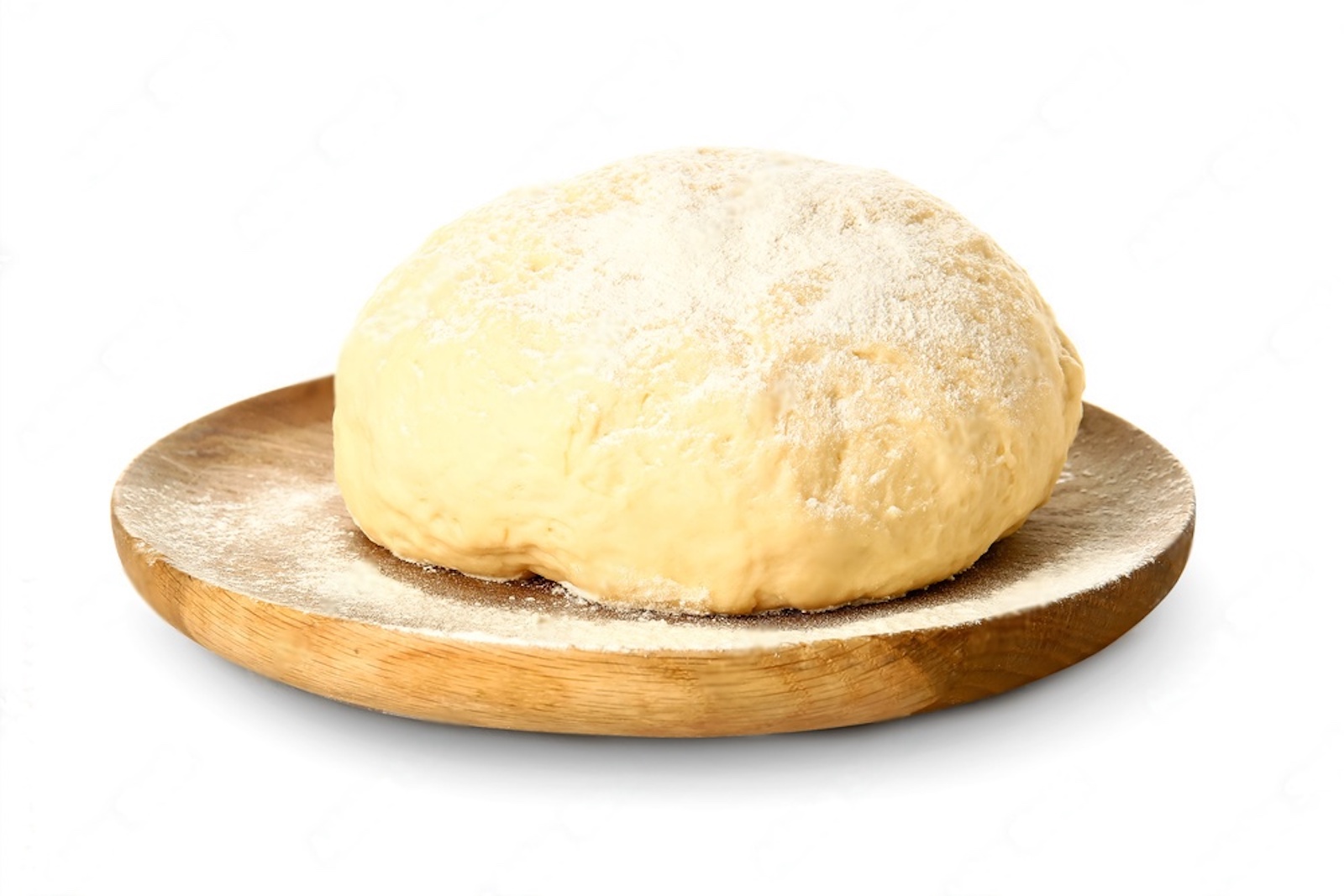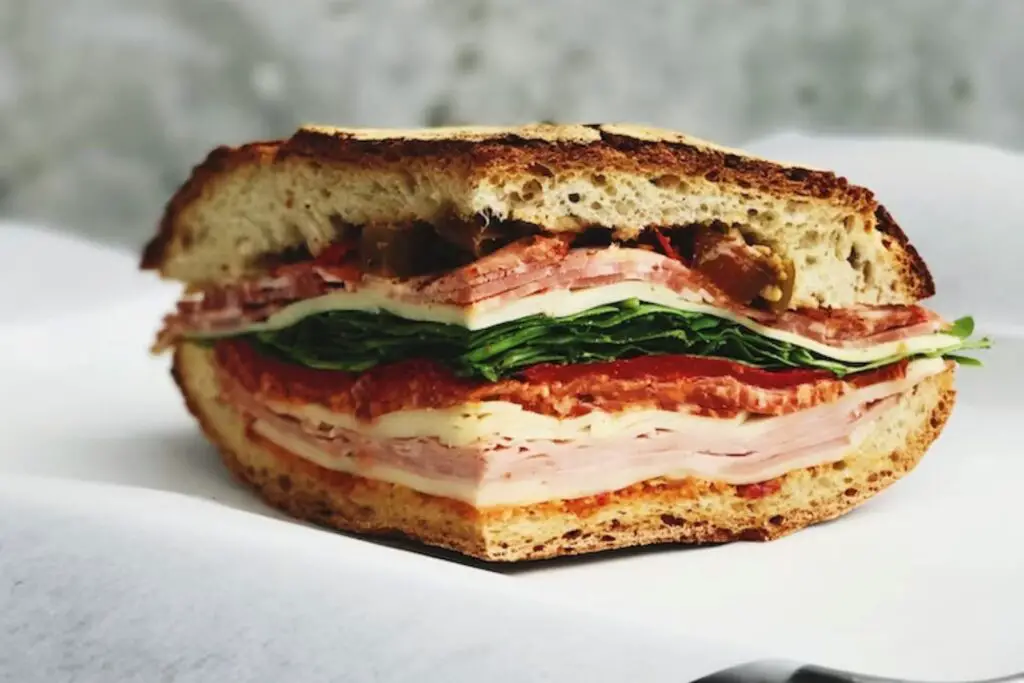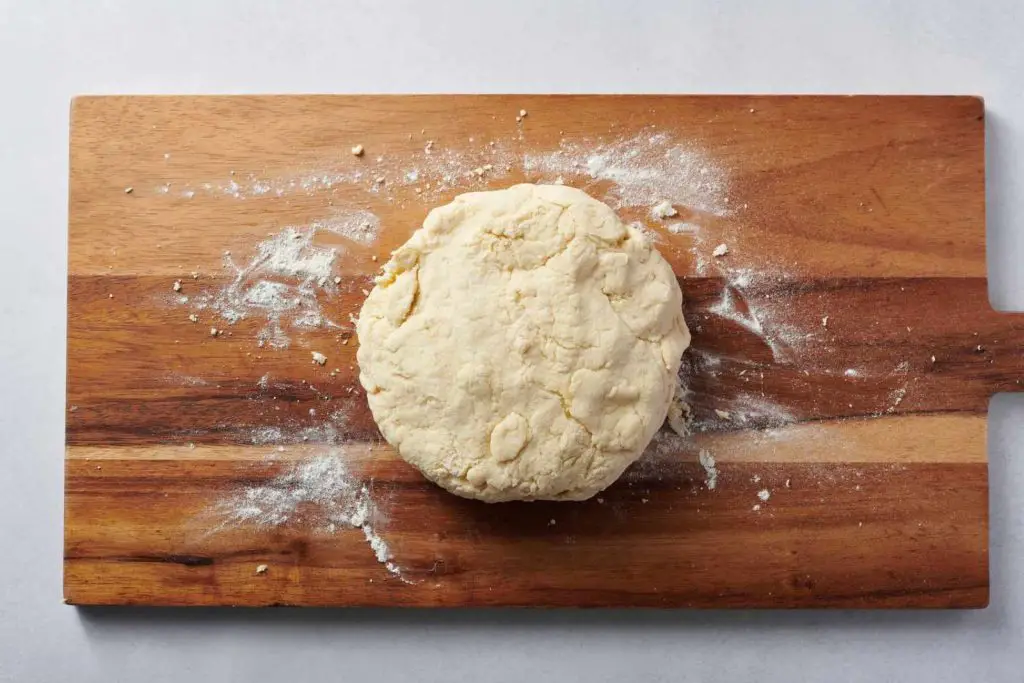
Sourdough pizza dough is a delightful variation of traditional pizza dough, known for its tangy flavor and chewy texture. Crafting the perfect sourdough pizza dough requires time and effort, making it a precious commodity you might want to preserve. Freezing sourdough pizza dough can be a convenient solution to ensure you always have a homemade pizza base on hand. By following a few simple steps, you can freeze your sourdough pizza dough while maintaining its exceptional quality. In this article, we will walk you through a comprehensive guide on freezing sourdough pizza dough, allowing you to savor your favorite homemade pizza anytime you desire.
Here’s a step-by-step guide on how to freeze sourdough pizza dough:
Step 1: Prepare the Sourdough Pizza Dough
When embarking on the journey of freezing sourdough pizza dough, the first and most crucial step is to start with a well-prepared dough. Sourdough pizza dough offers a delightful twist to traditional pizza bases, boasting a unique tangy taste and a chewy texture that many pizza enthusiasts find irresistible. The sourdough fermentation process not only enhances the flavor but also contributes to the dough’s digestibility and nutritional profile.
To get started, you’ll want to follow your trusted sourdough pizza dough recipe. If you don’t have a preferred recipe, you can easily find a variety of options online or in cookbooks dedicated to artisan bread and pizza making. These recipes typically call for basic ingredients such as flour, water, salt, and of course, sourdough starter.
The sourdough starter, a mixture of flour and water teeming with wild yeast and lactic acid bacteria, plays a pivotal role in giving the dough its characteristic tanginess. Incorporating the starter into your dough and allowing it to ferment for an appropriate duration are key factors in achieving the desired flavor profile.
Once you’ve mixed the ingredients and kneaded the dough to a cohesive state, it’s time to initiate the fermentation process. Cover the dough and let it rest at room temperature, allowing the wild yeast and bacteria to work their magic. The fermentation period might vary based on your recipe and the ambient temperature, but it often ranges from several hours to overnight.
During this fermentation phase, the dough undergoes a series of biochemical transformations. The yeast consumes the sugars present in the dough, producing carbon dioxide gas as a byproduct. This gas gets trapped within the dough’s structure, causing it to rise and develop air pockets. The lactic acid bacteria contribute to the dough’s acidity, which imparts the signature tanginess.
As the fermentation progresses, you’ll notice the dough expanding in volume and developing a complex aroma. It’s important to exercise patience during this stage, as allowing the dough sufficient time to ferment is crucial for the development of both flavor and texture.
When the dough has doubled in size (or as indicated by your recipe), it’s now ready to be shaped into pizza rounds. At this point, the dough should exhibit a well-defined sourdough aroma, a sign that the fermentation process has been successful.
Step 2: Portion the Dough
Having meticulously prepared your sourdough pizza dough and allowed it to undergo its transformative fermentation journey, the next step involves taking the dough and dividing it into manageable portions. This strategic division not only facilitates the freezing process but also sets the stage for hassle-free future pizza-making endeavors.
Once your dough has completed its rise and exhibits the desired volume, it’s crucial to portion it appropriately. This means dividing the dough into smaller segments that are ideally suited for crafting individual pizzas. By doing so, you’re setting yourself up for culinary success in the days to come.
Portioning the dough serves several essential purposes:
- Portion Control: Dividing the dough into portions ensures that you have precise control over the amount you thaw and use. This prevents wastage, as you won’t need to defrost an entire batch of dough when you only intend to create a single pizza. This way, you can relish freshly made sourdough pizza while keeping the remaining dough preserved for later use.
- Consistent Results: Portioning the dough allows you to achieve consistent results in terms of pizza size and thickness. Each portion will yield a pizza of similar dimensions, ensuring that your pizzas are evenly cooked and visually appealing.
- Ease of Handling: Smaller dough portions are easier to handle and shape. They can be more effectively rolled out into round bases without excessive effort, leading to a more uniform and professional-looking end product.
- Versatility: Portioned sourdough pizza dough opens the door to creative experimentation. You can try different toppings, styles, and flavor profiles for each pizza, catering to various tastes within your household.
To accomplish this step effectively, gently deflate the fully risen dough using your hands or a spatula. Then, use a kitchen scale to measure out equal portions of dough according to your chosen pizza size. Common portion sizes might range from individual serving sizes to sizes suitable for larger gatherings.
Can I freeze sourdough pizza dough in bulk?
It’s recommended to freeze sourdough pizza dough in individual portions. Freezing in bulk can lead to challenges in portioning and thawing. Individual freezing ensures better handling and portion control for future use.
Step 3: Shape the Dough Balls
With your sourdough pizza dough portioned into manageable sizes, the next crucial step is to give each portion a thoughtful and effective shaping. Shaping the dough into neat balls not only contributes to its aesthetic appeal but also plays a pivotal role in preserving its quality during the freezing and thawing process.
Taking each portion of dough and shaping it into a ball might seem like a simple task, but its importance cannot be overstated. Here’s why this step is essential:
- Structural Integrity: Sourdough pizza dough is a delicate balance of gluten strands, gasses produced during fermentation, and moisture. Shaping the dough into a ball post-portioning helps maintain its structural integrity. The dough’s proteins and starches are aligned during shaping, contributing to a desirable chewy texture when baked.
- Even Freezing: Shaping the dough into balls ensures that it freezes evenly. When dough is evenly shaped, it thaws and bakes uniformly, resulting in a well-balanced crust. This prevents the common issue of unevenly cooked sections in the final baked pizza.
- Minimizing Air Exposure: Forming dough balls minimizes the dough’s surface area exposed to air during freezing. This helps prevent freezer burn and dehydration, which can negatively impact the texture and taste of the dough.
- Easier Handling: Rounded dough balls are easier to work with when it comes time to defrost and shape them into pizza bases. Their uniform shape allows for smooth rolling and stretching, facilitating the pizza-making process.
To shape the dough balls effectively, follow these steps:
- Gently flatten each portion of dough into a small disc on a lightly floured surface.
- Fold the edges of the disc toward the center, forming a small package. Pinch the edges together to seal the seams.
- Carefully flip the dough over so that the seams are facing down.
- Using the palms of your hands, gently roll the dough in a circular motion. Apply slight pressure as you roll to create tension on the surface of the dough, resulting in a smooth and taut dough ball.
- Once you’ve achieved a neat and round shape, place the dough ball on a parchment-lined tray or baking sheet. Repeat this process for each portion of dough.
Step 4: Wrap the Dough Balls
As you embark on the journey of freezing your meticulously prepared sourdough pizza dough, the next critical step involves wrapping each individual dough ball with care. This protective layer not only safeguards the dough’s texture and flavor but also ensures that it remains in optimal condition during its time in the freezer.
Individually wrapping each dough ball serves several vital purposes in the freezing process:
- Barrier Against Freezer Burn: Freezer burn occurs when moisture within the food migrates to the surface and forms ice crystals. These crystals can lead to a dry, unappetizing texture and may negatively impact the dough’s flavor. Wrapping each dough ball acts as a barrier, preventing moisture loss and the formation of ice crystals.
- Maintaining Moisture: Sourdough pizza dough, with its complex blend of fermented flavors and moisture content, can lose its coveted qualities if exposed to dry freezer air. The wrapping, whether it’s plastic wrap or airtight freezer bags, helps retain the dough’s intrinsic moisture, preserving its softness and taste.
- Preventing Flavor Absorption: Dough, with its porous structure, can absorb odors from the freezer environment if not adequately protected. Wrapping each dough ball individually ensures that it remains isolated from potential odors, allowing it to retain its unique sourdough character.
- Simplifying Defrosting: Individually wrapped dough balls can be defrosted one at a time, providing the flexibility to bake a single pizza whenever the craving strikes. This prevents the need to thaw a larger batch of dough, which might result in leftover dough that needs to be refrozen – a process that can affect the dough’s quality.
To wrap the dough balls effectively:
- Take one dough ball at a time and gently press it into a round disc shape, if needed, to ensure it fits comfortably within the wrapping material.
- Use plastic wrap or place the dough ball in an airtight freezer bag, ensuring that there’s minimal air trapped within the wrap or bag. For extra protection, consider double-wrapping by placing the wrapped dough ball inside a second layer of wrapping.
- Seal the plastic wrap or freezer bag securely, making sure there are no gaps or openings where air could enter.
- If using plastic wrap, you can twist the ends to create a tight seal, resembling a candy wrapper. If using freezer bags, gently press out excess air before sealing.
- Repeat this wrapping process for each individual dough ball.
Step 5: Arrange on a Tray
As you continue on the path of freezing your carefully shaped and wrapped sourdough pizza dough balls, the next step involves arranging them on a tray or baking sheet. This seemingly simple action serves a crucial purpose in ensuring that your dough balls freeze individually and maintain their distinct shapes and textures throughout the freezing process.
Arranging the wrapped dough balls on a tray provides several key benefits:
- Preventing Sticking: When dough balls are placed directly in the freezer without any initial separation, they can easily come into contact with one another. As they begin to freeze, the moisture on their surfaces can cause them to stick together. By placing them on a tray with some spacing, you reduce the chances of them adhering to each other.
- Individual Freezing: When dough balls freeze individually, they retain their unique shapes and sizes. This is particularly important for sourdough pizza dough, as the specific shaping you’ve given each ball contributes to the overall texture and appearance of the pizza crust. Individual freezing preserves these characteristics.
- Ease of Handling: Frozen dough balls that are individually spaced on a tray are easier to work with. You can remove only the required number of dough balls for baking, allowing the others to remain undisturbed in the freezer until needed.
To arrange the wrapped dough balls on a tray effectively:
- Choose a clean and dry tray or baking sheet that can fit comfortably in your freezer.
- If the tray has a tendency to stick, you can line it with parchment paper to prevent the dough balls from adhering to the surface.
- Take each wrapped dough ball and place it on the tray, ensuring there’s some space between each ball. A few inches of separation should suffice.
- If you’re arranging multiple layers of dough balls, you can use sheets of parchment paper to separate the layers and prevent any accidental sticking.
- Once all the dough balls are arranged on the tray, place the tray in the freezer.
Step 6: Initially Freeze
With your wrapped sourdough pizza dough balls expertly arranged on a tray, you’re now ready to take a crucial step in the freezing process – the initial freeze. This phase involves placing the tray in the freezer and allowing the dough balls to firm up for a brief period. This technique, often referred to as flash-freezing, is a vital practice that contributes to preserving the integrity of the dough’s texture and shape during extended storage.
The concept of flash-freezing revolves around quickly lowering the temperature of the dough to inhibit the formation of large ice crystals within its structure. Here’s why this step is so important:
- Preserving Texture: When liquids freeze, they form ice crystals that can disrupt the delicate structure of the dough. Large ice crystals can puncture cell walls and cause moisture loss upon thawing, resulting in a less desirable texture. Flash-freezing, by rapidly reducing the temperature of the dough, encourages the formation of small ice crystals. This minimizes cell damage and helps preserve the dough’s texture.
- Maintaining Shape: Sourdough pizza dough is carefully shaped into balls to create the desired crust structure. If the dough is not flash-frozen, it might become slightly flattened due to the pressure of adjacent items in the freezer. Flash-freezing solidifies the dough quickly, ensuring that its shape remains intact even as it’s stored alongside other frozen items.
- Preventing Stickiness: During the initial stages of freezing, the dough’s moisture can condense on its surface and create a slightly sticky layer. Flash-freezing prevents dough balls from sticking together, making it easier to handle and separate them when you’re ready to bake.
To perform the initial freeze, follow these steps:
- Place the tray with the arranged, wrapped dough balls in the freezer. Ensure that the tray is level to prevent any shifting of the dough balls during freezing.
- Let the dough balls firm up in the freezer for about 1 to 2 hours. The exact duration might vary based on your freezer’s temperature and the size of the dough balls.
- The dough balls should become solid to the touch, but they won’t be fully frozen through. At this point, they are ready to be transferred for long-term storage.
Step 7: Repackage for Long-Term Storage
With your sourdough pizza dough balls having undergone their initial flash-freeze on the tray, the time has come to transition them into a more suitable long-term storage solution. This step involves transferring the partially frozen dough balls from the tray to heavy-duty freezer bags, ensuring that they are packed in a manner that maintains their quality over an extended period.
Repackaging the dough balls for long-term storage serves several critical purposes:
- Minimizing Freezer Burn: While the initial flash-freezing helps protect against freezer burn, repackaging the dough balls in airtight containers further reduces the risk of moisture loss and exposure to freezer air. Freezer burn can negatively affect the texture and flavor of the dough.
- Preventing Odor Absorption: Heavy-duty freezer bags offer an extra layer of protection against potential odor absorption from other items in the freezer. This ensures that your sourdough pizza dough retains its unique taste and aroma.
- Efficient Use of Space: Freezer bags allow you to stack and arrange the dough balls in a space-efficient manner, optimizing the use of your freezer’s storage capacity.
To repackage the partially frozen dough balls effectively:
- Remove the tray from the freezer, ensuring that the dough balls are partially frozen but still pliable.
- Prepare heavy-duty freezer bags by labeling them with the date of freezing if they’re not already pre-labeled.
- Take each dough ball and gently place it into a separate freezer bag. To minimize the introduction of excess air, hold the bag upright and guide the dough ball in slowly.
- Before sealing the bag, use your hands to gently press down on the dough ball to remove as much air as possible. This step helps prevent the formation of ice crystals and maintains the dough’s texture.
- Seal the bag tightly, ensuring that there are no gaps or openings that could allow air in.
- If desired, you can double-bag the dough balls for added protection. Simply place the sealed bag containing the dough ball into a second freezer bag and seal the outer bag.
- Repeat this process for each dough ball.
Is vacuum-sealing better for freezing sourdough pizza dough?
Vacuum-sealing can enhance freezing results by minimizing air exposure, reducing freezer burn risk. It’s beneficial if you prioritize extended storage or want precise moisture preservation. However, airtight freezer bags also suffice for effective freezing.
Step 8: Label and Date
As you approach the final stages of freezing your carefully crafted sourdough pizza dough, a critical yet straightforward step awaits: labeling and dating each freezer bag. This seemingly small action holds significant importance in maintaining the quality of your dough and ensuring that you can enjoy your homemade sourdough pizzas at their finest.
Labeling and dating each freezer bag serves several essential purposes:
- Tracking Freshness: Time has a way of passing quickly, and it’s not uncommon for items in the freezer to be forgotten or neglected. By clearly labeling each bag with the date of freezing, you have a clear record of when the dough was preserved. This helps you keep track of how long the dough has been stored and make informed decisions about its usability.
- Quality Control: Sourdough pizza dough, like any food item, is at its peak quality within a certain window of time. Over time, frozen foods can experience changes in texture and flavor. By knowing the freezing date, you can make sure to use the dough within its optimal timeframe, ensuring the best pizza results.
- Prioritization: If you have multiple batches of frozen sourdough pizza dough, labeling with dates allows you to prioritize which batches to use first based on their age. This helps prevent any dough from languishing in the freezer for too long.
To label and date the freezer bags effectively:
- Ensure that each freezer bag containing a dough ball is securely sealed.
- Using a permanent marker, write the date of freezing on a visible area of the bag. Be sure to include the day, month, and year for accurate tracking.
- If you have specific batches of dough with varying preparation dates, you might also consider adding a brief description or batch number to help you differentiate between them.
- Allow the writing to dry for a moment to avoid smudging.
- Repeat this process for each freezer bag.
Step 9: Store in the Freezer
As you reach the final step in the process of freezing your sourdough pizza dough, the culmination of your efforts is at hand. With the dough carefully portioned, wrapped, and labeled, it’s time to entrust its care to the freezer – a safe haven where its quality will be preserved for your future culinary adventures.
Storing your labeled dough bags in the freezer serves several important purposes:
- Preservation of Quality: The low temperatures of the freezer halt the biological processes that can lead to spoilage. Your sourdough pizza dough will remain in a state of suspended animation, largely maintaining its unique texture, flavor, and structural integrity.
- Convenience and Preparedness: By freezing your dough in portioned balls, you’re ensuring that you’re well-prepared for any pizza-making cravings. Whether it’s a spontaneous weeknight dinner or a planned weekend gathering, having frozen sourdough pizza dough at the ready allows you to effortlessly create homemade pizzas.
- Extended Usability: While the frozen dough’s quality remains relatively stable for up to three months, its usability can extend even beyond that timeframe. While there might be some gradual changes in texture and flavor over extended periods, the dough can still yield delicious results when handled and baked with care.
To store the labeled dough bags in the freezer effectively:
- Make sure that each labeled freezer bag is securely sealed to prevent any potential air exposure.
- Clear a space in your freezer where the bags can be placed without obstruction.
- Arrange the bags in a manner that allows for easy access and retrieval. Placing them in a single layer or stacking them with care can help you make the most of the available space.
- Avoid placing heavy items on top of the bags to prevent unnecessary pressure on the dough balls.
- Close the freezer door gently to avoid disturbing the arrangement.
What’s the ideal temperature for freezing sourdough pizza dough?
The ideal freezing temperature for sourdough pizza dough is 0°F (-18°C) or lower. This temperature prevents the growth of microorganisms and preserves the dough’s quality. Ensure your freezer maintains this temperature for optimal results.
Other related questions
How do I defrost sourdough pizza dough?
To defrost sourdough pizza dough, transfer the frozen dough from the freezer to the refrigerator. Allow it to thaw slowly for 8-12 hours or overnight. Once thawed, let the dough rest at room temperature for about 30 minutes before shaping and baking.
Is there a special method to defrost sourdough pizza dough quickly?
While gradual refrigeration is recommended for defrosting sourdough pizza dough, a quicker method involves placing the dough, still sealed in a bag, under cold running water. Once partially thawed, let it rest at room temperature to activate yeast before shaping and baking. This method expedites the process while ensuring proper dough quality.
Can I refreeze sourdough pizza dough?
Refreezing sourdough pizza dough is not recommended, as it can compromise texture and taste due to moisture loss and changes in yeast activity. Once dough is thawed, it’s best to use it promptly to maintain quality. To avoid waste, portion dough before freezing.
How do I know if the sourdough pizza dough has gone bad after being frozen?
If sourdough pizza dough develops an off-smell, unusual color, or excessive freezer burn, it may have deteriorated in quality. Visible mold growth is a clear sign of spoilage. Additionally, if the dough becomes excessively dry, sticky, or loses its elasticity, it may no longer be suitable for use.
Can I freeze sourdough pizza dough with toppings?
Freezing sourdough pizza dough with toppings is not recommended. Toppings can introduce excess moisture and lead to uneven freezing. For optimal results, freeze plain dough and add toppings fresh when you’re ready to bake.
What if my sourdough pizza dough looks slightly different after freezing?
Slight changes in sourdough pizza dough’s appearance after freezing are normal, including color or texture variations. As long as there’s no off-putting odor or visible mold, the dough is likely safe to use. Thaw, allow to rise, then proceed with shaping and baking per your recipe.
Can I freeze sourdough pizza dough with a sourdough starter?
Yes, you can freeze sourdough pizza dough with a sourdough starter incorporated. The sourdough starter might experience minor changes during freezing, but it’s generally safe. Thaw the dough, allow it to rise, then shape and bake for delicious results.
Can I freeze sourdough pizza dough with added herbs or flavorings?
Yes, you can freeze sourdough pizza dough with added herbs or flavorings. However, strong flavors might intensify during freezing. To maintain optimal taste, consider adding herbs and seasonings when shaping and baking after thawing.








